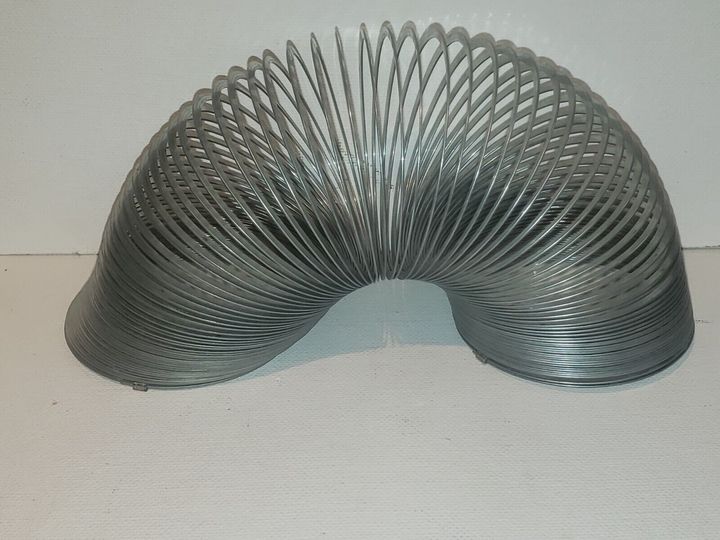In an era where technology often overshadows simplicity, it’s refreshing to reflect on times when small, uncomplicated things brought immense joy and significance. One such emblem of simplicity and wonder is the SLINKY Original Walking Spring Toy. Born out of a serendipitous moment in 1945, this toy has become a timeless classic, delighting generations with its unique movement and charming simplicity.
A Brief History of the SLINKY
The SLINKY was the brainchild of Richard James, a naval engineer who stumbled upon its potential by accident. While working on tension springs for maritime equipment, James noticed one of his springs tumbling down the stairs in a mesmerizing fashion. This unexpected observation sparked the idea of the SLINKY as a toy. Introduced to the public in 1945, the SLINKY quickly captivated hearts with its effortless and fluid motion.
The Mechanics Behind the Magic
At its core, the SLINKY operates on a simple mechanical principle. Its helical spring design allows it to stretch and contract, creating a walking effect when placed on an inclined surface or a flight of stairs. As the SLINKY descends, each coil transfers energy to the next, resulting in a smooth, continuous motion. This seemingly simple mechanism is what makes the SLINKY endlessly entertaining. Beyond stairs, the SLINKY can be stretched, bounced, and manipulated in various ways, providing a versatile play experience.
Cultural Impact and Legacy
The SLINKY’s appeal is deeply rooted in its simplicity and the joy it brings to people of all ages. In the 1950s and 1960s, the SLINKY became a cultural phenomenon, appearing in numerous television commercials and becoming a household staple. Its iconic jingle, “It’s Slinky, it’s Slinky, for fun it’s a wonderful toy,” remains etched in the memories of many who grew up during that era.
A Tool for Learning
Interestingly, the SLINKY’s significance extends beyond entertainment. It has found a place in educational settings, where it is used to demonstrate fundamental principles of physics and engineering. Teachers often use the SLINKY to explain concepts such as wave propagation, energy transfer, and the dynamics of motion. This educational aspect has further cemented the SLINKY’s status as a multifaceted toy.
Collectors’ Delight
Over the years, the SLINKY has also become a prized item for collectors. Vintage SLINKY toys, particularly those from the early production years, are sought after for their nostalgic value and historical significance. Collectors often seek out original models and limited-edition versions, preserving these pieces of toy history for future generations to appreciate.
Enduring Popularity
Despite the influx of high-tech toys and digital entertainment, the SLINKY has retained its popularity. Its design has remained largely unchanged, a testament to its enduring appeal. The SLINKY continues to be manufactured and sold worldwide, proving that simple, well-designed toys can stand the test of time. Its ability to evoke a sense of wonder and nostalgia keeps it relevant even in today’s fast-paced world.
Quotes from Enthusiasts
The enduring charm of the SLINKY is perhaps best captured by those who have experienced its magic firsthand. One enthusiast recalls, “Watching the SLINKY walk down the stairs never gets old. It’s like watching a piece of mechanical poetry in motion.” Another collector shares, “The SLINKY is more than just a toy; it’s a piece of my childhood that I can pass down to my children. It’s a timeless reminder of simpler times.”
Conclusion
In conclusion, the SLINKY Original Walking Spring Toy is a remarkable example of how simple inventions can have a lasting impact. From its accidental discovery to its cultural significance and educational value, the SLINKY has touched the lives of millions. It serves as a reminder that sometimes, the simplest things can bring the greatest joy and create lasting memories. As we navigate the complexities of modern life, the SLINKY stands as a symbol of simplicity, wonder, and timeless fun.

